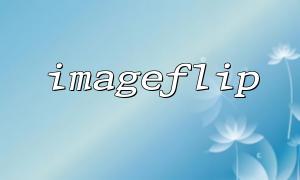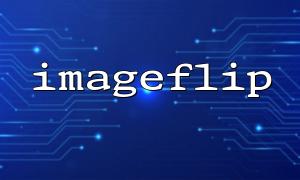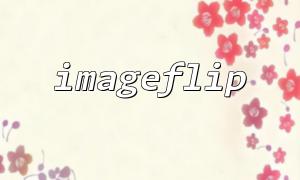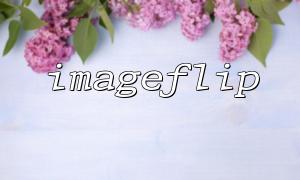In PHP, the imageflip function is a common function in the image processing library (GD), which allows developers to easily flip images on images. Although imageflip itself mainly flips the image, through certain skills and coordination, we can also use it to adjust the background color of the image or combine it with other image processing functions to achieve more complex effects. Next, we will show how to use the imageflip function with practical examples and explore some basic image processing effects it can achieve.
The syntax of the imageflip function is as follows:
int imageflip(resource $image, int $mode)
$image is an image resource, usually an image loaded through functions such as imagecreatefromjpeg , imagecreatefrommpng, etc.
$mode is a parameter that specifies the flip mode. Common values are:
IMG_FLIP_HORIZONTAL : Horizontal flip
IMG_FLIP_VERTICAL : vertical flip
IMG_FLIP_BOTH : Perform horizontal and vertical flips simultaneously
The function of this function is mainly the image flip, but if we use its flip effect and combine other technical means, we can also adjust the background color of the image.
Although imageflip itself does not directly support the function of adjusting background color, we can indirectly change the background color of the image by flipping the color of the blank area. For example, we can first use imagefill or imagecolorallocate to set the background color of the image, and then use imageflip to change the display effect of the flipped part.
Here is a simple example showing how to use the imageflip function to flip and adjust the background color of an image:
<?php
// Create a 400x400 Images
$image = imagecreatetruecolor(400, 400);
// Set the background color to light blue
$backgroundColor = imagecolorallocate($image, 173, 216, 230); // RGB: Light Blue
imagefill($image, 0, 0, $backgroundColor);
// Draw something on the image(For example, a rectangle)
$rectColor = imagecolorallocate($image, 255, 99, 71); // RGB: Tomato Red
imagefilledrectangle($image, 50, 50, 350, 350, $rectColor);
// Perform horizontal flip
imageflip($image, IMG_FLIP_HORIZONTAL);
// Output image
header('Content-Type: image/png');
imagepng($image);
// Clean the memory
imagedestroy($image);
?>
In this example, we first create an image and set the background color to light blue (RGB: 173, 216, 230), and then draw a red rectangle on the image. Finally, horizontal flip is performed through the imageflip function. Although the imageflip function itself does not directly change the background color, it changes the visual effect of the image, and the position of the background color can be changed through the flip operation.
imageflip is mainly used for image flip operations, but combined with the functions of other GD libraries, it can be used to achieve some interesting image effects:
Through a combination of horizontal flip ( IMG_FLIP_HORIZONTAL ) and vertical flip ( IMG_FLIP_VERTICAL ), we can achieve the mirroring effect of the image. For example:
imageflip($image, IMG_FLIP_BOTH); // Perform horizontal and vertical mirror flips
This creates a symmetrical image that looks like the effect of a mirror reflection.
Combining imageflip and image gradient technology, we can also create some cool background effects. For example, by drawing a gradient background in an image and then flipping the image, a dynamic gradient background effect can be produced.
// Create a gradient background and flip
imageflip($gradientImage, IMG_FLIP_HORIZONTAL);
In some dynamic images (GIFs or animations), we can also use imageflip to achieve frame-by-frame flip effect, thereby bringing dynamic flip animation to the image.
The main function of the imageflip function in PHP is image flip, which supports horizontal flip, vertical flip and combinatorial operations of horizontal and vertical flip at the same time. Although the imageflip function does not directly provide the function of changing the background color, we can indirectly adjust the visual effect of the image by setting the background color first and then combining the flip effect. In addition, the imageflip function can be combined with other image processing technologies to create various interesting image effects, such as mirroring, gradient background, etc.
By flexibly using imageflip functions, PHP developers can achieve richer visual effects in image processing and improve user experience.















